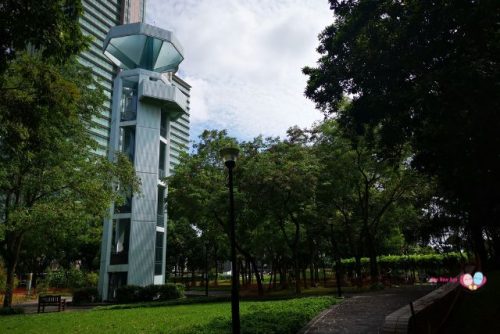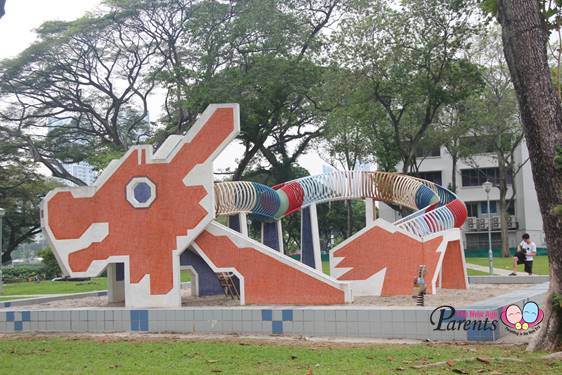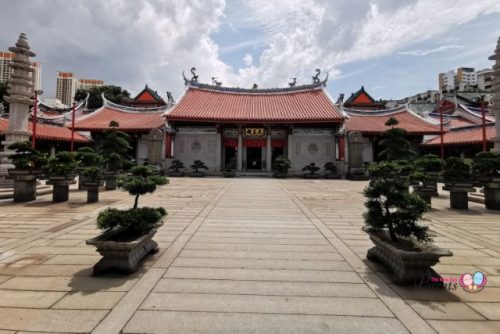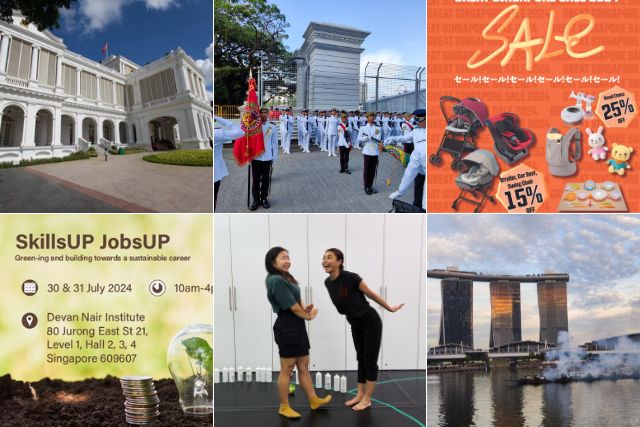A pioneering “showpiece” for Singapore’s public housing; a classic dragon design that has become synonymous with our local playgrounds; a town park that paved the way for parks and other green spaces in public housing estates; the host village for Singapore’s first major international sporting competition; and the location of the first NTUC Fairprice supermarket. As the Housing & Development Board (HDB)’s public housing prototype town, Toa Payoh has seen many innovative “firsts”, and served as a model for the development of residential towns all over Singapore.
The National Heritage Board (NHB)’s refreshed Toa Payoh Heritage Trail will expound on the history of Singapore’s “model town” and tell the lesser-known stories of Toa Payoh’s significant landmarks and ubiquitous locales. First launched in 2014 as NHB’s 11th heritage trail, the Toa Payoh Heritage Trail traced the development of the area from swampland to a “model” estate, which subsequently became home to iconic religious and community institutions.
The refreshed Toa Payoh Heritage Trail covers 29 heritage sites and features 10 heritage trail markers, with two new marked sites comprising Block 53, also known as the “VIP Block”, and the iconic Toa Payoh Dragon Playground. These two sites join existing marked sites such as Lian Shan Shuang Lin Monastery, a National Monument and the oldest Buddhist monastery in Singapore; Masjid Muhajirin, the first mosque in Singapore to have been built with the support of contributions from the Mosque Building Fund (known as the Mosque Building and Mendaki Fund (MBMF) today) alongside community fundraising; Toa Payoh Town Park, home to a 25-metre-tall Look-Out Tower which was accorded conservation status by the Urban Redevelopment Authority in 2009; and four point HDB blocks¹ which housed international athletes as part of the Former 1973 Southeast Asian Peninsular (SEAP) Games Village.

Mr Alvin Tan, Deputy Chief Executive (Policy & Community), NHB, said: “Through the refreshed Toa Payoh Heritage Trail, we hope to highlight new facets of the town’s history that very few Singaporeans know about, and present a more complete and updated story of Toa Payoh. In doing so, we hope to foster a greater sense of pride and belonging amongst residents, and encourage both residents and non-residents to re-explore Toa Payoh and rediscover the town’s heritage anew.”
The Toa Payoh Heritage Trail also incorporates contributions from the community and presents stories, memories and photographs contributed by former and current residents. Mdm Tang Mei Fong, a resident of Block 53 who contributed to the refreshed Toa Payoh Heritage Trail, shared her personal memories of Toa Payoh: “I vividly remember the day Queen Elizabeth II visited our block. We all gathered around our doorways to look out for her arrival. I am very proud that a queen visited, and that Toa Payoh is used as a model for Singapore’s public housing that we show to the world.”
Forerunner in design
As the first town designed and developed entirely by HDB, Toa Payoh acted as a testbed for different architectural styles and features of public housing, as well as community amenities that can be found in HDB towns today. Block 53 and its surrounding blocks, which were among the first built in the area, are examples of such innovative architecture.
Completed in 1967, the 19-storey Block 53 offers a panoramic view of Toa Payoh. A viewing gallery on its roof played host to many foreign and local dignitaries such as Britain’s Queen Elizabeth II, then-Australian Prime Minister John Gorton, and Singapore’s second President Benjamin Sheares, which led it to be dubbed the “VIP Block”.
As a model town, Toa Payoh became the host village for the first major international sporting competition to be held in Singapore – the 1973 Southeast Asian Peninsular (SEAP) Games. In fact, the town provided venues for competition and training, and was the location of the 1973 SEAP Games Village, where Toa Payoh Central is today. While the games villages of most international meets are located away from local population centres, the Toa Payoh Games Village embedded visiting athletes and officials from seven different countries in the heart of Toa Payoh, and encouraged them to socialise with the locals, providing them with an authentic Singaporean experience.
A total of four HDB point blocks in Toa Payoh Central were used to house athletes from the seven participating nations. Following the conclusion of the games, units in the blocks were sold to the public fully furnished.

Another much-celebrated landmark of Toa Payoh is the iconic Dragon Playground, with its classic elements of a terrazzo-clad dragon’s head distinguished by bold lines and geometric features. It was the creation of HDB architect Mr Khor Ean Ghee and the design proved to be so popular that it led to different versions of the dragon head in various colour schemes appearing in playgrounds across Singapore.
➡️ Related Read: Dragon Playgrounds in Singapore
A refresh with fresh stories
The updated Toa Payoh Heritage Trail also sheds light on lesser-known stories of the town, such as how women formed the majority of the pioneer generation of young factory workers in Singapore as it underwent rapid industrialisation in the 1960s. During that period, Toa Payoh was a hub of manufacturing activity, and among pioneer factory workers, its female labour force played a significant role in the employment and output growth in the labour-intensive manufacturing sector in Singapore.
Another highlight of the refreshed trail is the NTUC Fairprice located at 192 Lorong 4 Toa Payoh, whose ubiquitous look belies its landmark status as the first National Trades Union Congress (NTUC) Welcome Supermarket in Singapore. It was opened to counter inflation and supplier profiteering. The supermarket attracted huge numbers of shoppers upon its opening, and even had to close its doors every three to four hours to prevent overcrowding.
Rediscover Toa Payoh through three thematic routes
As part of the refresh, three newly curated thematic routes will bring trail-goers on different journeys vis-a-vis (1) the evolution of public housing design, (2) the histories of religious institutions in Toa Payoh and (3) the everyday heritage of the area’s community institutions. These self-guided routes, which trail-goers can embark on in their own time and according to their interests, are:
● Of Public Housing & Shared Spaces (1.5 hours on foot, 4.5 km)
This trail explores the architectural development of HDB blocks, communal spaces and town planning, which reflected the needs and aspirations of Singaporean homeowners over the decades.
● Of Faiths & Beliefs (2 hours with public transport, 6 km)
This trail showcases the temples, mosques, churches and institutions that represent the diverse communities which live, work and worshipped in Toa Payoh.
● Of Community Institutions & Common Spaces (0.5 hours on foot, 1.5 km)
This trail focuses on the institutions and spaces that continue to play an active role in the sporting, cultural and social lives of Toa Payoh residents.
The Toa Payoh Heritage Trail’s companion guide and map can be downloaded from NHB’s heritage portal. Limited printed copies of the guide and map will also be available at various locations including the National Museum of Singapore, Asian Civilisations Museum, Toa Payoh East Community Club, Toa Payoh South Community Club, Toa Payoh Central Community Club, Toa Payoh West Community Club, and NHB headquarters at Stamford Court. A video of highlights of the Toa Payoh Heritage Trail can also be viewed here.
TOA PAYOH HERITAGE TRAIL SITES AND MARKERS
1. Lian Shan Shuang Lin Monastery
2. Toa Payoh Seu Teck Sean Tong
3. Tree Shrine at Block 177
4. Church of the Risen Christ
5. Toa Payoh Methodist Church
6. United Five Temples of Toa Payoh
7. Masjid Muhajirin
8. Chung Hwa Medical Institution
9. Sri Vairavimada Kaliamman Temple
10. Singapore Federation of Chinese Clan Associations
11. Block 53, The “VIP Block”*
12. Toa Payoh Town Park
13. Former 1973 SEAP Games Village
14. Toa Payoh Dragon Playground*
15. Toa Payoh Sports Complex
16. Poh Chung Tian Chor Sian Tong
17. NTUC Welcome Supermarket (now NTUC Fairprice)
18. Former kampongs/areas in Toa Payoh: Kampong Puay Teng Keng, Kampong Hup Choon Hng, Or Kio, Ann Siang Sua, Kampong Potong Pasir
19. Former Temple Estate
20. Block 116 (bat-shaped design)
21. The Peak @ Toa Payoh (Redevelopment with features such as roof gardens)
22. Block 157 (semi-circular design, one of the longest in Singapore)
23. Central Horizon (SERS project of five 40-storey blocks with ‘golden crowns’)
24. Former Philips factory
25. Former Fairchild factory
26. Former Siong Hoe Biscuit Factory
27. Grave Hill
28. Convent of the Holy Infant Jesus
29. Madrasah Al-Arabiah Al-Islamiah
Total: 29 sites
Heritage sites featured on trail markers are in BOLD (note that multiple sites can be featured on the same marker as some of these sites are located in close proximity to one another). Sites 16 to 29 are featured in the Toa Payoh Heritage Trail’s companion guide but are not part of the thematic trail routes.
*New marked sites for the refresh
FIVE LESSER-KNOWN FACTS ABOUT TOA PAYOH
1. A survey by the Singapore Improvement Trust (SIT) conducted in 1954 described some 600 acres of Toa Payoh as “land which we consider to be the most fertile on the island”.
The farms in Toa Payoh contributed greatly to Singapore’s food supply which, when disrupted by a flood in 1954, contributed to an estimated 60 percent drop in island-wide food production.
2. HDB’s first town planner Alan Choe was tasked with planning the layout of the then ‘barren’ Toa Payoh.
Toa Payoh was Singapore’s first town planned with a target population of between 180,000 and 250,000.
3. Toa Payoh is home to the oldest Buddhist monastery in Singapore.

Lian Shan Shuang Lin Monastery’s Hall of Celestial Kings and Mahavira Hall (Tian Wang Dian and Da Xiong Bao Dian respectively) were gazetted collectively as a National Monument in 1980.
4. Toa Payoh Seu Teck Sean Tong was used as a landmark during the planning of Toa Payoh town.
HDB’s first town planner Alan Choe planned for the roads to start from the temple, from which he also set the pattern of the town. The temple still stands at its original location on Toa Payoh Lorong 6, with its current building completed in 1959 and various expansions to the temple in the 1990s including a columbarium.
5. The Church of the Risen Christ was the first Catholic church in Toa Payoh town.
According to a parishioner, many young women hoping to conceive would touch the figure of baby Jesus and then their abdomens, while another rumour floated around the Lorong 4 market that the church was lucky – some people wrote their lottery numbers on the palms of their hands as they went to receive Holy Communion.
¹ HDB point blocks were first constructed in 1970 and evolved from slab blocks, which consisted of a greater number of flats arranged in a row on each floor and shared common party walls. Point blocks eliminated common corridors and placed apartments on the four corners of every floor.
➡️ Related Read: List of Heritage Trails Developed by the National Heritage Board (NHB)
* * * * *
Like what you see here? Get parenting tips and stories straight to your inbox! Join our mailing list here.
Want to be heard 👂 and seen 👀 by over 100,000 parents in Singapore? We can help! Leave your contact here and we’ll be in touch.















































Leave a Comment: